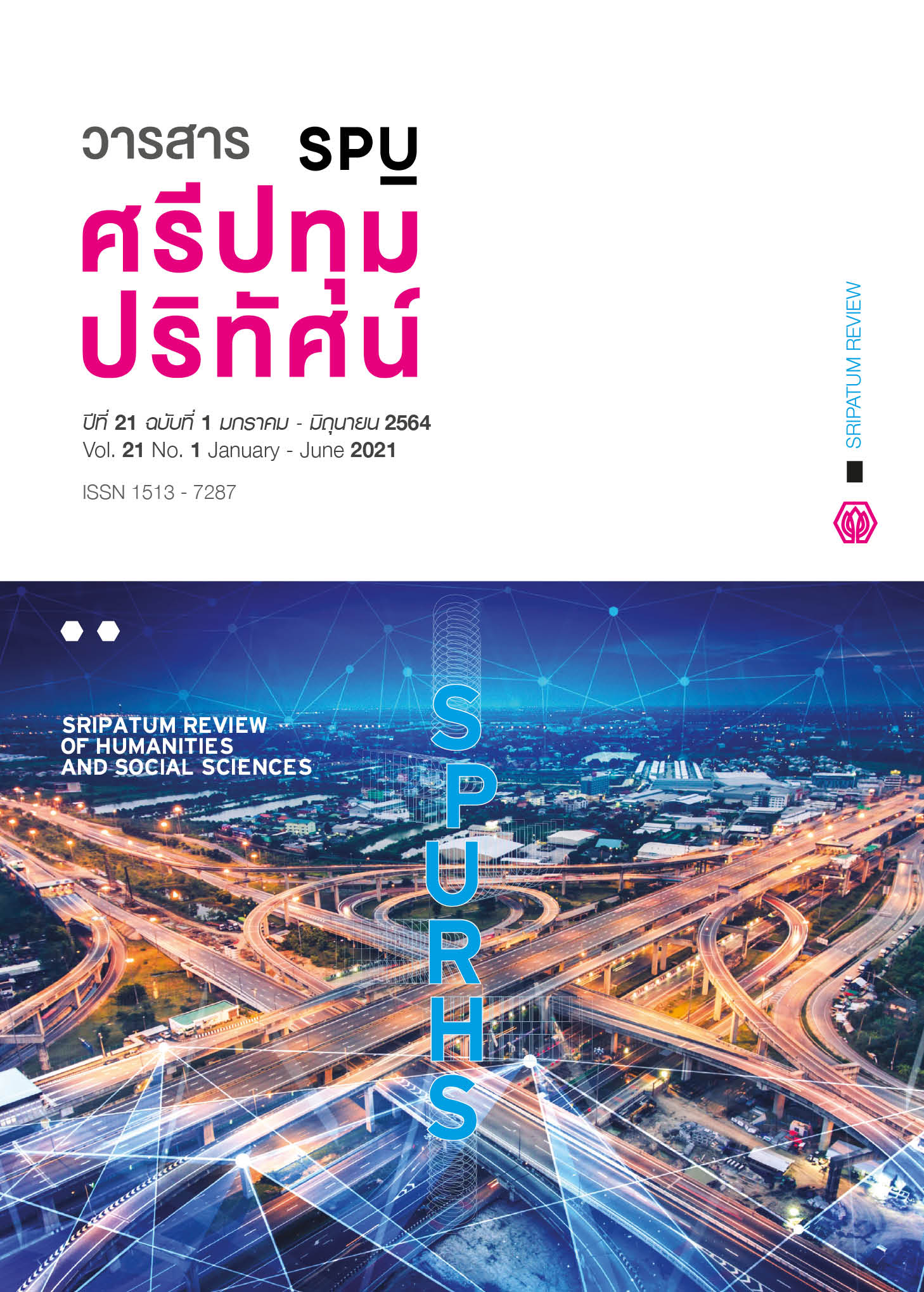Spokesperson Selection for Crisis Communication
Main Article Content
Abstract
The selection of spokespersons for communication in crisis situations is a very necessary process for the organization in order to prepare its readiness for confrontation with crisis situations. The selection process should be undertaken systematically with consideration of two components, namely, basic qualifications and communication competence as selection criteria. Organizations may use a communication competence measurement form along with in-depth interview, simulation, and role play as selection methods. Communication administrators and human resource administrators of the organization should provide an opportunity for speech communication experts to be members of the selection committee in order to help in the selection of the right “personal media” to become the right spokesperson for communication in crisis situations.
Article Details
1. กองบรรณาธิการสงวนสิทธิ์ในการพิจารณาและตัดสินการตีพิมพ์บทความในวารสาร
2. บทความทุกเรื่องจะได้รับการตรวจสอบทางวิชาการโดยผู้ทรงคุณวุฒิ แต่ข้อความและเนื้อหาในบทความที่ตีพิมพ์เป็นความรับผิดชอบของผู้เขียนแต่เพียงผู้เดียว มิใช่ความคิดเห็นและความรับผิดชอบของมหาวิทยาลัยศรีปทุม
3. การคัดลอกอ้างอิงต้องดำเนินการตามการปฏิบัติในหมู่นักวิชาการโดยทั่วไป และสอดคล้องกับกฎหมายที่เกี่ยวข้อง
References
Coombs, W.T. (2015). Ongoing Crisis Communication: Planning, Managing, and Responding. 4th ed. California: Sage.
Devlin, E.S. (2007). Crisis Management Planning and Execution. Florida: Auerbach.
Fearn-Banks, K. (2001). Crisis Communication: A Casebook Approach. 2nd ed. New Jersey: Lawrence Erlbaum.
Fink, S. (2013). Crisis Communication: The Definitive Guide to Managing the Message. New York: McGraw-Hill.
Fongkaew, K. et al. (2017). Media for Change: Working with Media on Sexuality, Gender Identity, Expression and Sexual Characteristics in Thailand. Chonburi: Burapa University. (in Thai)
Frandsen, F. and Johansen, W. (2017). Organizational Crisis Communication. London: Sage.
Kaewtep, K. et.al. (2006). Below the Educational Sky: Personal Media and Communication Connections, The Research Overview. Bangkok: Thailand Research Fund. (in Thai)
Phakdiburut, W. (2009). The Art of Using Language for Communication. Bangkok: Triple Education. (in Thai)
Pirantaowad, O. (2006). Persuasive Communication. 4th ed. Bangkok: Chulalongkorn University Press. (in Thai)
Sasithorn, N. (1972). Principle of Public Speaking. 2nd ed. Chiang Mai: Faculty of Social Sciences, Chiang Mai University. (in Thai)
Sermthong, A. (2016). Personal Media and Ways to Develop Professional Presentations. Sripatum Review of Humanities and Social Sciences, 16(1), 119-127. (in Thai)
Sheehan, M. and Quinn-Allan, D. (2015). Crisis Communication in a Digital World. Melbourne: Cambridge University Press.
Sompaiboon, S. (2020). Vocal Training and Oral Interpretation Textbook (2804341). Bangkok: Faculty of Communication Arts, Chulalongkorn University. (in Thai)
Sriussadaporn-Chareonngam, N. (2000). Communication Competence: Organizational Ecology Concept. Journal of Communication Arts, 18(4), 1-49. (in Thai)
Sriussadaporn, R. (2015). Personality and Communication Competence: From Childhood to Working Age. Bangkok: Chulalongkorn University Press. (in Thai)
Thaweeyonnaramitr, M. (1995). A Portrayal of Public Spokeswomen’ Images through Printed Media. Thesis of the Degree of Master of Arts Program in Mass Communication. Bangkok: Chulalongkorn University. (in Thai)
Ulmer, R.R., Sellnow, T.L. and Seeger, M.W. (2015). Effective Crisis Communication: Moving from Crisis to Opportunity. 3rd ed. California: Sage.
Vivatananukul, M. (2013). Interview Principles for Management, Mass Communication and Research. Bangkok: Chulalongkorn University Press. (in Thai)
Vivatananukul, M. (2016). Intercultural Communication. 2nd ed. Bangkok: Chulalongkorn University Press. (in Thai)
Weibel, D, Wissmath, B. and Groner, R. (2008). How Gender and Age affect Newscasters’ Credibility – An Investigation in Switzerland. Journal of Broadcasting and Electronic Media, 52(3), 466-484.
Winans, J. (1978). Speech Making. New York: Century Company.


